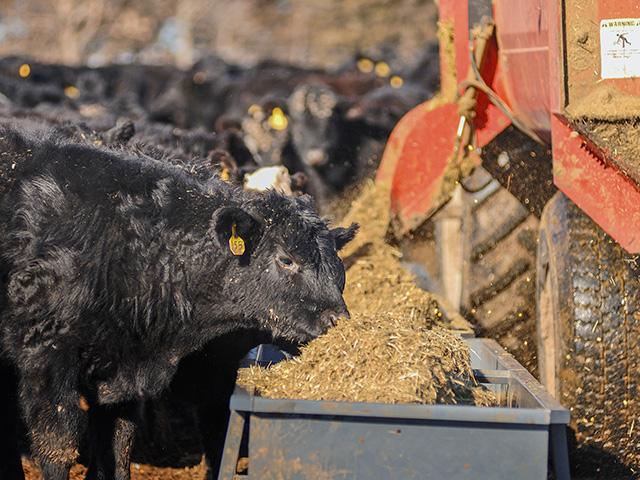Call the Market
Fed Cattle Stumble Instead of Soar Into 2023
Leading up to the new year and thinking of what may come in 2023, cattlemen throughout the land were touting bullish tones and laying out their predictions for how good the market could become.
Why shouldn't they have been excited? Throughout the month of December, fat cattle rallied to the highest price the market has seen in the last seven years and, given where the market sits regarding cowherd inventory and thin supplies of feeders, thin fed cattle supplies should have driven prices even higher. Not to mention, despite economic pressures of inflation, boxed beef demand was utterly impressive. Throughout December, choice cuts gained $27.52, and select cuts gained $25.93.
Come the first full trading week of 2023, however, the market didn't perform like it was expected to. The live cattle futures merely chopped sideways, boxed beef prices wilted, and the cash cattle market not only traded softer, but it even sold cattle with time.
Fast forward to this week, and we find ourselves in the unsettled position of trying to decipher what the market is telling us instead of arguing what the market should be doing.
P[L1] D[0x0] M[300x250] OOP[F] ADUNIT[] T[]
Why is the market traipsing sideways in some facets and trading lower in others when it was expected to blow the doors off 2023 and trade higher?
Possibility No. 1: The market isn't disagreeing that higher prices are to come but is merely pausing and trading sideways for the time being. As much as we'd like to think we can expect 365 days of stronger, higher, faster trading when in bull markets -- that's not how it works. In both good years and in bad, there will always be days when the market closes higher, and there will be days when the market closes lower.
Possibility No. 2: Is a price correction merited? I don't believe so. The market established new contract highs in most of the nearby 2023 live cattle contracts right before the end of 2022. Since then, the market has had interruptions and, in the early weeks of January, we often see that the market has kinks it has to work out before it can trade full steam ahead. Last year the market was expected to run vigorously into 2022 as well, but the market had to unexpectedly deal with a spike in Omicron cases, which hindered processing speeds and pulled production down until early February.
Deciphering the "why" of any change in the market is hard to pinpoint until time provides an answer, but there are a few blunt realities that we can expect for the weeks ahead. First, given that feedlots eased off their rigorous determination to keep the cash cattle market advancing forward, it's likely that packers will use the leverage they've recently gained to keep cash prices steady or potentially even drive prices down $1 or $2 over the next couple of weeks. Thankfully, carcass weights have been slowly regressing. Just last week, the most recent slaughter data showed that, for the week ended Dec. 31, steers averaged 915 pounds, which is 5 pounds less than the previous week and 10 pounds lighter than a year ago. For the same week, heifers averaged 839 pounds, which is 5 pounds lighter than the previous week and 12 pounds lighter than a year ago. Even so, there are plenty of cattle becoming available on showlists, and it's going to be imperative that feedlots market their showlists strategically to avoid becoming overburdened.
Looking back to the July 1, 2022, Cattle on Feed report, which would have those placements roughly on feed for 180 days now, the number of cattle placed in June amounted to 1.63 million head, which was 3.6% higher than a year ago. As I said earlier, showlists are current, but in order to manage the incoming supplies of cattle that need to be marketed and leave finishing yards, feedlots will need to market strategically to avoid becoming overburdened with too many cattle on their showlists.
Kenny Rogers coined it best when he sang, "You've got to know when to hold 'em, know when to fold 'em; know when to walk away and know when to run. You never count your money when you're sittin' at the table, there'll be time enough for countin' when the dealings done." My hope is that, through this year, feedlots know exactly that -- when to hold 'em, when to fold 'em and when to walk away.
Packers know they're facing a year when their margin is expected to recede, and they're going to fight like hell to keep the cash cattle market as low as possible. Feedlots are entering an era when it will gravely matter how they market cattle, week in and week out, and I hope that feedlots can look back to 2014 and early 2015 and remember how they had a winning mentality in those days and market their pens similarly.
ShayLe Stewart can be reached at ShayLe.Stewart@dtn.com
(c) Copyright 2023 DTN, LLC. All rights reserved.




